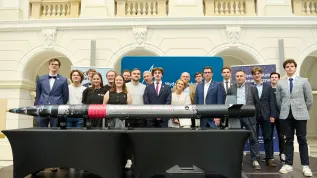
Although the number of international students studying in Poland increased by 4,200 compared to the previous year to 82,000, it is not known where almost a third of them are, says the President of the Education Foundation PERSPEKTYWY, Waldemar Siwiński.
Since March 2020, due to the COVID-19 pandemic, most Polish universities have been functioning in remote mode. Consequently, it is not known how many are actually in Poland.
Siwiński said: “It appears that [although] the pandemic has not negatively affected the number of international students in Poland […] most of them have never entered the college walls, they study remotely. So they formally are students, but it is unclear whether they will come to Poland after the pandemic and want to continue their studies.”
According to the study ‘Internationalisation in the times of the pandemic' conducted in April among 70 academic universities by the Commission for International Cooperation of the Conference of Rectors of Academic Schools in Poland (CRASP) and the Education Foundation PERSPEKTYWY, universities do not know where almost a third of their international students actually are.
Siwiński said: “Nearly 37 percent of foreigners at Polish universities study in English, virtually, of course, and at this time at least half stay in their home countries.
“There is a fear that they may come to the conclusion that for only a bit more money they can remotely obtain a diploma from an American or British university, usually more valued on the international market. This creates a real competitive threat to Polish higher education.”
He added that the full effect of the pandemic will only be known in the coming years, because it is unclear whether various restrictions will be lifted everywhere at a similar time.
Compared to the previous year, the number of students from Ukraine decreased in Poland to 38,500 over 500 people less than last year. In turn, the number of students from Belarus increased to over 9,700, over 1,300 more than a year ago.
Meanwhile, the number of students from India clearly decreased to 2,500, over 1,000 less than two years ago, which is associated with a more difficult visa procedure. “If we do not facilitate their arrival, they are looking for other markets. That's why there are more than 18,000 of them in Ukraine, where visa procedures are more friendly to students,” Siwiński sais.
He added that the forecasts for rebuilding academic mobility may take up to five years, but it is necessary, because virtual studies have their weaknesses and traps. The main goal of studying abroad, Siwiński continued, is social experience in another country and environment, life on campus and face-to-face meetings with staff and peers from other countries.
(PAP)
Author: Szymon Zdziebłowski
szz/ mhr/ kap/
tr. RL













